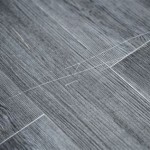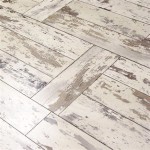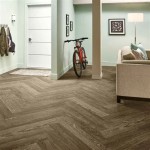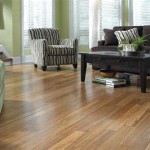What Is The Best Laminate Flooring For High Traffic Areas?
Laminate flooring has become a popular choice for homeowners seeking a durable and aesthetically pleasing alternative to hardwood or tile. Its affordability, ease of installation, and wide range of styles contribute to its desirability. However, when it comes to high-traffic areas, selecting the right type of laminate is crucial for ensuring long-lasting performance and maintaining a visually appealing surface. Selecting an unsuitable product can lead to premature wear, damage, and the need for costly replacements.
High-traffic areas, such as hallways, living rooms, kitchens, and entryways, experience significant footfall, often accompanied by dirt, moisture, and abrasion. These conditions demand a laminate floor that can withstand constant use, resist scratches and dents, and maintain its appearance over time. Understanding the key factors that contribute to a laminate floor's durability and suitability for high-traffic zones is essential for making an informed purchasing decision.
This article will delve into the essential characteristics of laminate flooring that make it suitable for high-traffic areas, focusing on factors such as AC rating, core density, thickness, and wear layer. Understanding these elements and how they interact will empower readers to choose the best laminate flooring to withstand the demands of heavily used spaces within their homes or businesses.
Understanding AC Rating: The Key to Durability
The Abrasion Class (AC) rating is a standardized measure of a laminate floor's resistance to abrasion, impact, and staining. It's a vital indicator of its suitability for different levels of foot traffic. The AC rating scale ranges from AC1 to AC5, with higher numbers indicating greater durability. In essence, the AC rating represents the floor's ability to withstand daily wear and tear, maintaining its appearance and structural integrity over an extended period.
AC1-rated laminate is typically suitable for light residential use, such as bedrooms with minimal foot traffic. AC2-rated laminate is designed for moderate residential use, like living rooms or dining rooms. However, for high-traffic areas, AC3, AC4, or AC5-rated laminate flooring is highly recommended. These ratings signify the floor's ability to withstand heavy foot traffic, including commercial applications in some cases.
AC3-rated laminate is appropriate for heavy residential use and light commercial applications, such as offices or small retail spaces with moderate customer traffic. AC4-rated laminate offers even greater durability, making it suitable for busy homes with children and pets, as well as commercial spaces with higher foot traffic. AC5-rated laminate represents the highest level of durability and is ideal for demanding commercial environments with constant heavy traffic, such as department stores or public buildings. For most residential high-traffic areas, AC4 is generally considered a good balance of durability and cost-effectiveness.
When selecting laminate flooring for high-traffic zones, carefully consider the AC rating and choose a product that meets or exceeds the expected level of foot traffic and potential wear. Opting for a higher AC rating will provide peace of mind, knowing that the floor is designed to withstand the rigors of daily use and maintain its appearance for years to come. Ignoring the AC rating can lead to premature wear, scratching, and the need for costly replacement, ultimately negating any initial cost savings.
The Importance of Core Density and Thickness
The core of laminate flooring is the foundation of its strength and stability. It's typically composed of High-Density Fiberboard (HDF) or Medium-Density Fiberboard (MDF). The density of the core material significantly impacts the floor's resistance to indentation, impact damage, and moisture absorption. A denser core translates to a more durable and long-lasting floor, particularly in high-traffic areas prone to heavy use and potential spills.
HDF is generally considered superior to MDF due to its higher density and greater resistance to moisture. HDF core laminate flooring is typically more expensive, but the investment can be worthwhile for high-traffic areas where durability is paramount. When selecting laminate, look for products that explicitly state the use of HDF in the core construction. While manufacturers may not always specify the exact density, a heavier board often indicates a denser core and, consequently, greater durability.
Thickness also plays a crucial role in the overall performance of laminate flooring. Thicker laminate planks provide greater stability, better sound absorption, and increased resistance to indentation. Thicker planks also tend to have better locking systems, which contribute to a more secure and long-lasting installation. For high-traffic areas, laminate flooring with a thickness of 10mm or greater is generally recommended. While thinner options may be more affordable, they are less likely to withstand the demands of heavy use and may require more frequent replacement.
The combination of core density and thickness significantly impacts the overall durability and performance of laminate flooring. Opting for a laminate with a dense core, preferably HDF, and a thickness of 10mm or greater will ensure that the floor can withstand the constant wear and tear associated with high-traffic areas, minimizing the risk of damage and extending its lifespan. While both factors contribute to the overall cost, the enhanced durability and longevity make the investment worthwhile in the long run.
Wear Layer and Surface Texture: Protection and Aesthetics
The wear layer is the topmost transparent layer of laminate flooring that protects the decorative layer (the photographic image that gives the laminate its appearance) from scratches, stains, and fading. The thickness of the wear layer, measured in mils (thousandths of an inch), is a critical indicator of the floor's ability to withstand wear and tear. A thicker wear layer provides greater protection and contributes to the floor's overall longevity, especially in high-traffic areas.
For high-traffic areas, a wear layer of at least 12 mils is recommended. While some laminate floors may have wear layers as thin as 6 mils, these are generally not suitable for areas with heavy foot traffic. A thicker wear layer will better resist scratches from shoes, pet claws, and furniture, as well as stains from spills and dirt. Over time, the wear layer inevitably experiences some level of abrasion. A thicker wear layer prolongs the time before the decorative layer becomes exposed, extending the floor's life.
The surface texture of laminate flooring also plays a role in its suitability for high-traffic areas. Textured surfaces can help to conceal minor scratches and imperfections, making the floor appear newer for longer. Embossed-in-register (EIR) textures, which align the texture with the printed grain pattern of the decorative layer, offer a more realistic wood-look and also provide a degree of scratch resistance. Smooth surfaces, on the other hand, may be easier to clean but tend to show scratches more readily.
In addition to providing protection, the wear layer and surface texture also contribute to the aesthetic appeal of the laminate flooring. Choose a finish and texture that complements the overall design of the space and considers the practical aspects of maintenance. Matte finishes tend to conceal scratches and dirt better than glossy finishes, making them a better choice for high-traffic areas where cleanliness is a priority. Selecting a wear layer thickness of at least 12 mils and considering the surface texture can ensure the floor maintains its appearance and withstands the rigors of daily use in high-traffic areas.
Beyond the factors discussed above, other considerations can influence the suitability of laminate flooring for high-traffic areas. These include the quality of the locking system, the water resistance of the core, and the availability of matching moldings and trims. A robust locking system ensures that the planks remain tightly connected, preventing gaps and minimizing the risk of moisture penetration. Water-resistant laminate can withstand spills and splashes, making it a better choice for kitchens and entryways. Matching moldings and trims provide a finished look and protect the edges of the floor from damage.
Ultimately, selecting the best laminate flooring for high-traffic areas requires careful consideration of several factors, including AC rating, core density, thickness, wear layer, and surface texture. By prioritizing durability and selecting products that meet or exceed the demands of the intended use, homeowners and businesses can invest in laminate flooring that will provide long-lasting performance, maintain its aesthetic appeal, and minimize the need for costly repairs or replacements.

Best Flooring For High Traffic Spaces Trinity Surfaces

What S The Best Flooring For High Traffic Areas America

What Is The Best Flooring For High Traffic Areas Viaduct Imports

The Best Type Of Flooring For High Traffic Areas Parrys Carpets

5 Of The Best Flooring Selections For High Traffic Areas In Your Home Complete Carpet Co

Laminate Flooring For High Traffic Areas Choosing The Best Materials Your Needs Icustomfloor Com

Best Flooring For High Traffic Commercial Areas L Precision

Flooring Picks For The High Traffic Areas Of Your Home Seattle Times

Flooring Picks For The High Traffic Areas Of Your Home Seattle Times

Resilient Flooring For High Traffic Areas Carpet Call
Related Posts








